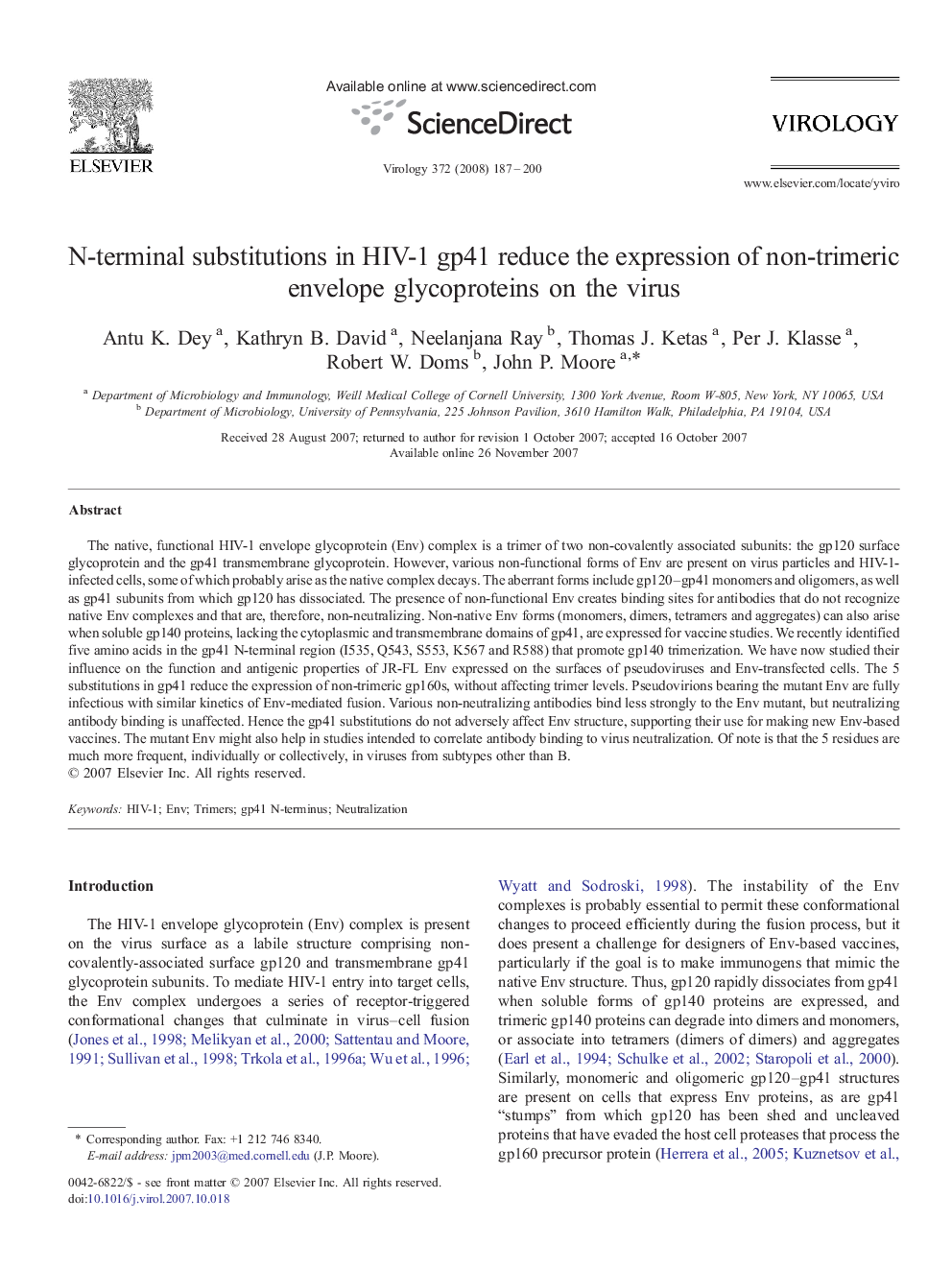| Article ID | Journal | Published Year | Pages | File Type |
|---|---|---|---|---|
| 3426507 | Virology | 2008 | 14 Pages |
The native, functional HIV-1 envelope glycoprotein (Env) complex is a trimer of two non-covalently associated subunits: the gp120 surface glycoprotein and the gp41 transmembrane glycoprotein. However, various non-functional forms of Env are present on virus particles and HIV-1-infected cells, some of which probably arise as the native complex decays. The aberrant forms include gp120–gp41 monomers and oligomers, as well as gp41 subunits from which gp120 has dissociated. The presence of non-functional Env creates binding sites for antibodies that do not recognize native Env complexes and that are, therefore, non-neutralizing. Non-native Env forms (monomers, dimers, tetramers and aggregates) can also arise when soluble gp140 proteins, lacking the cytoplasmic and transmembrane domains of gp41, are expressed for vaccine studies. We recently identified five amino acids in the gp41 N-terminal region (I535, Q543, S553, K567 and R588) that promote gp140 trimerization. We have now studied their influence on the function and antigenic properties of JR-FL Env expressed on the surfaces of pseudoviruses and Env-transfected cells. The 5 substitutions in gp41 reduce the expression of non-trimeric gp160s, without affecting trimer levels. Pseudovirions bearing the mutant Env are fully infectious with similar kinetics of Env-mediated fusion. Various non-neutralizing antibodies bind less strongly to the Env mutant, but neutralizing antibody binding is unaffected. Hence the gp41 substitutions do not adversely affect Env structure, supporting their use for making new Env-based vaccines. The mutant Env might also help in studies intended to correlate antibody binding to virus neutralization. Of note is that the 5 residues are much more frequent, individually or collectively, in viruses from subtypes other than B.
